on the road: Easter and Maramures
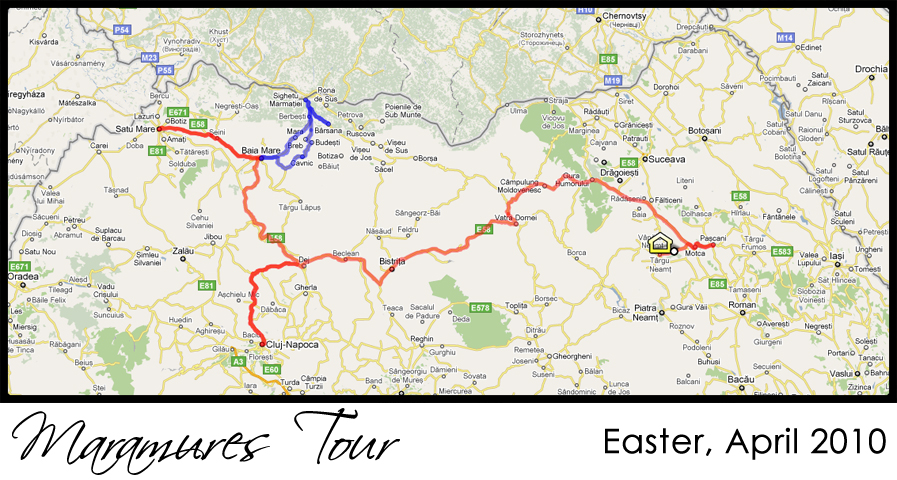
Our travel goal during the school year is to try to see as much of Romania as we can. It’d be a shame to live here and not SEE the country. For Easter and the school break, we had the absolute joy of traveling to Satu Mare, Baia Mare and the area called Maramures.
Satu Mare was our Easter stop because it has three important things — a Catholic Church, Mary Ann Foster, and Mary Ann’s cooking. Reading Lonely Planet’s synopsis of Satu Mare (which is not glowing in the least), one might not even make it there. But since we have seen the good and the bad of Romania, I think we have a bit more perspective. While not the cultural or visual or metropolitan epitome of Romania, Satu Mare has a colorful and wonderful sleepiness about it. Mary Ann lives in the center of town, so the Hungarian Catholic Cathedral is nearby, historical buildings are on every block, and there’s a beautiful park that was just starting to come into bloom.
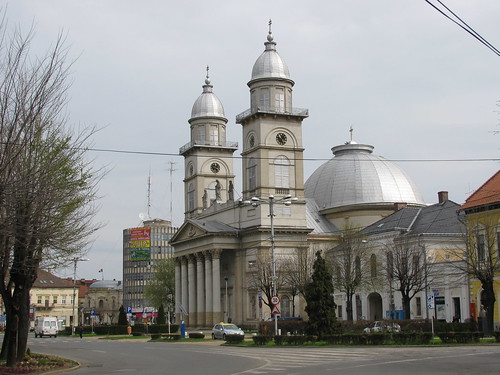
Hungarian Catholic Cathedral

Painting in dome of Cathedral
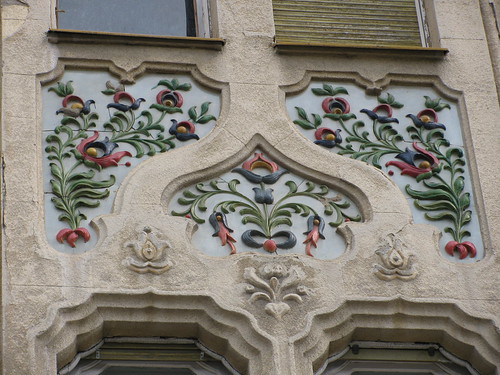
Building detail on Dacia Hotel
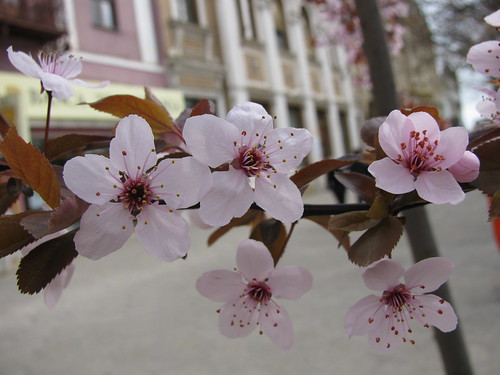
spring blooms
Beyond the scenery, there was Mary Ann’s hospitality. She had heard that we can’t get beef regularly in our neck of the woods, so after attending Mass at her parish (Biserica Calvaria), she cooked a feast of roast beef, veggies, and potatoes. And the food never ran out — there were cinnamon rolls and tacos and chocolate cake and snacks. Besides a full tummy, we got some quality Mary Ann time which I think I need in regular doses.
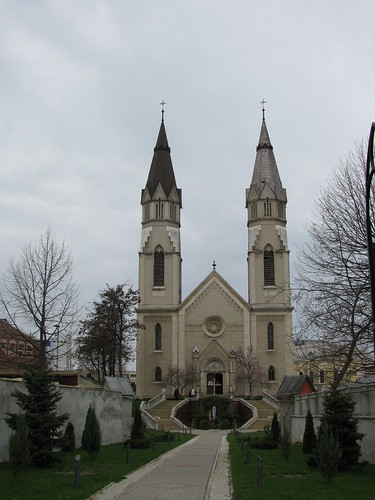
Exterior of Biserica Calvaria (Mary Ann's parish)
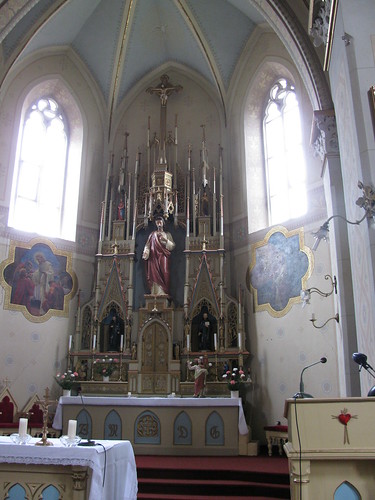
Interior of Biserica Calvaria (Altar)

Easter Dinner - Before

Easter Dinner - After
After a great time at Mary Ann’s we headed east to the city of Baia Mare. Baia Mare’s a bit busier and industrial. It’s situated on the Sasar River which is horrendously polluted due to a mining incident in 2000. We didn’t do much wandering around Baia Mare other than to check out the newly famous Obama Cafe.

Obama Cafe
After learning about my responsibilities on the Peace Corps’ Gender and Development Committee, we headed for a day-trip through western Maramures. Maramures is an area known for all things wooden (gates, churches, monasteries), traditional ways, and beautiful breath-taking landscapes in the mountains. Even though it was a rainy gray day, we were floored by the beauty of the region.
Our favorite wooden church (biserica de lemn) was in a village named Calinesti, where the wooden church sits atop a hill. The interior is tiny but every inch of it is covered in 17th century paintings (which have been beautifully restored).
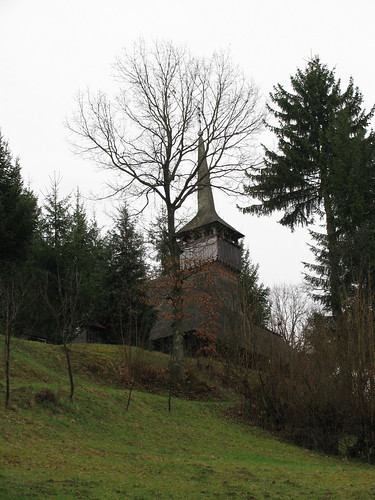
Biserica de Lemn @ Calinesti

Paintings in Wooden Church
Interestingly the two old wooden churches we visited were Greek Catholic. Greek Catholicism is new to me and I learned a little about it while on the road with our guide, Dan. There are some stark differences between Roman Catholicism and Greek Catholicism. Priests marry. During Mass, women and men sit separately (men in front, women in back). As well, much like orthodox, the priest and altar are separated from the flock by the iconostasis (where only men can be). The church in Surdesti still has an active congregation and we were struck by how different the interior looked compared to our typical vision of a church.
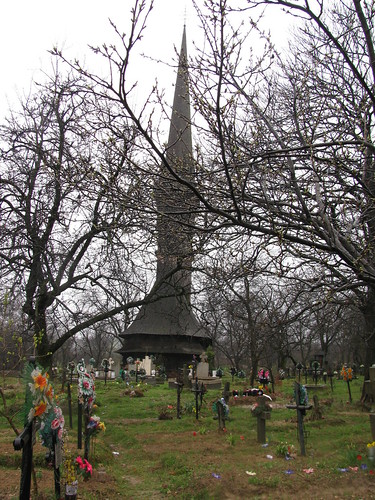
Biserica de Lemn @ Surdesti
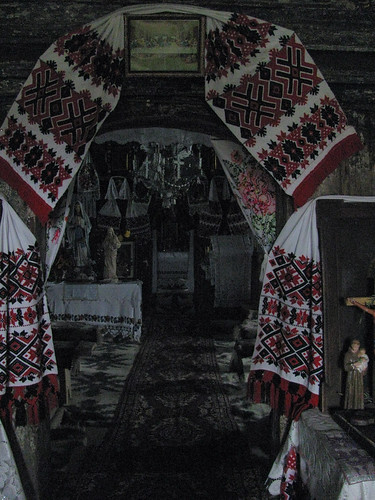
Interior - Biserica de Lemn @ Surdesti
From the wooden churches, we drove around the mountains and stopped to visit a miller and his wife. We ate homemade cozonac (sweet bread) and drank horinca (thrice-distilled plum liquor) and got a little tour of his operation.
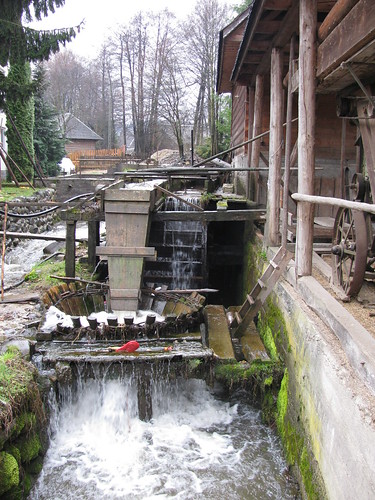
the mill
From the mill, we bopped over to a newer but traditional monastery in Barsana. Although new construction, the builders have remained true to Maramures wood. We were told that only 14 nuns live here which I must say is a pretty sweet deal.

Monastery @ Barsana
Somewhere along the line, we decided to stop to eat the bag lunches we brought. Dan took us up a road to have a great view while we ate. If the view was like this on a cloudy rainy gray day before spring really hits, I can only imagine what it looks like when it’s clear and in full bloom.

Panorama of Muramures
Our last stops were two that I was excited about — Sighet Prison Museum and the Merry Cemetery. Sighetu Marmatiei is a town very close to the Ukrainian border that was the home of an infamous prison where the communist regime incarcerated politicians, scholars, artists, writers, and many others who “threatened” or opposed the communist agenda. While stark and depressing, it is an education in a building. Each cell exhibits how communism impacted lives of Romanians — collectivization of farms, political propaganda, suppression of free speech, forced labor, and the list goes on and on. There were a few cells left just as they would have been during its operations.

Prison Cell @ Sighet
As we left the museum/prison, we were feeling overwhelmed by all the information but we felt like we understood more about the culture and the people we live with here. There were two memorials that honored those killed at the many prisons across Romania. These works of art seemed to sum up the overall sentiments we felt: grief and loss — of lives, of knowledge, of opportunities for generations of people and a country we are growing to love.
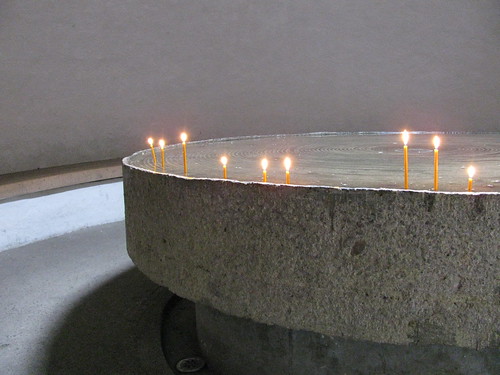
lit candles at the memorial
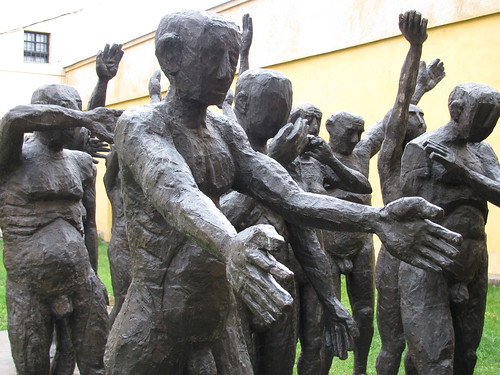
bronze figures at memorial
Our last stop was the Merry Cemetery (Cimitirul Vesel) in the village of Sapanta. This place has been on my must-see list of Romanian locales since I found out I was coming to Romania. It’s a cemetery covered with folk (or some call it naive) art that depicts the life work (and sometimes the death) of those buried there. There is humor and bright color in the midst of death. Stan Ioan Patras began making the oak carvings for the cemetery in the 1930s. Since his death, two of his apprentices continue the work. I have so many favorites from this cemetery that it’s tough to share just one. But we decided that the “mother-in-law” epitaph is our favorite. The drunk is a close second
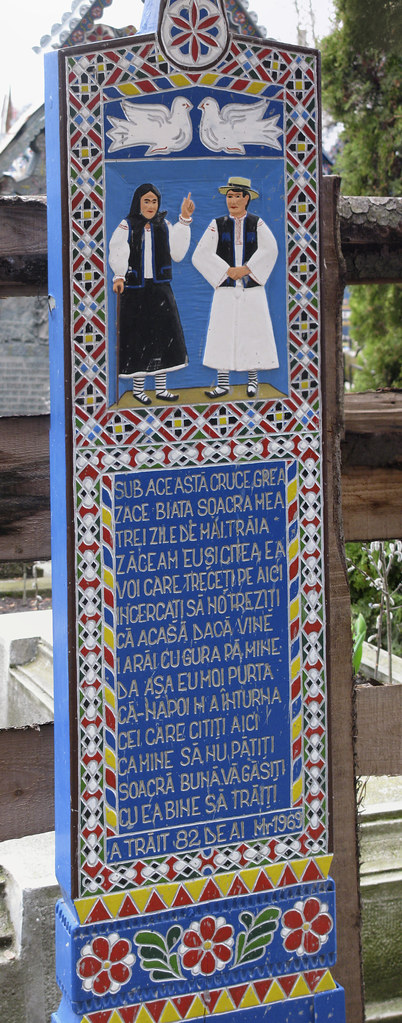
Mother-in-law epitaph
This epitaph (loosely) translates to the following:
(Note: this epitaph in no way reflects how either of us feel about our wonderful mothers-in-law!)
Underneath this heavy cross
Lies my poor mother- in-law
Had she lived three days more
I’d be buried here and she’s be reading (this)
You who are passing by
Try not to wake her up
For if she comes home
She’ll bite my head off
But I’ll tread softly
That she doesn’t return and stays buried.
You who are reading here
Don’t let what happened to me happen to you.
Find you a good mother-in-law
With her, you’ll live well.
And of course, there the verging-on-inappropriate art that made us both giggle.
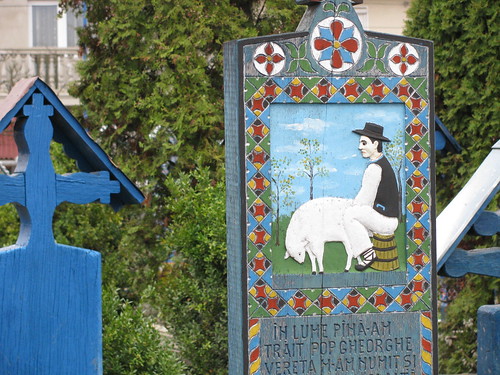
someone who "works" with sheep?
From the Merry Cemetery we headed back to Baia Mare. We stopped to snap a photo of a beautiful wooden gate before closing our whirlwind tour of this beautiful region. We definitely hope to come back here and explore more.
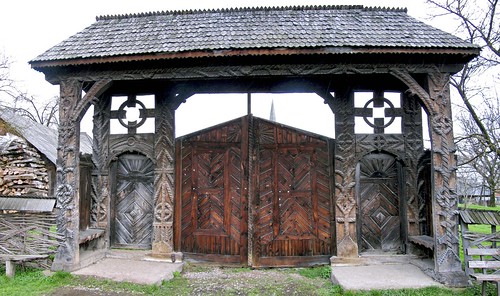
wooden gate outside wooden church
All of our photographs of this trip can be found here.
1 Comment
in the community; about Romania: Madge « daveronica
June 5, 2010[…] could put it in cast, but she’d need looking after. Of course, we were heading off for our Easter tour of Maramures the next day and couldn’t do the looking […]